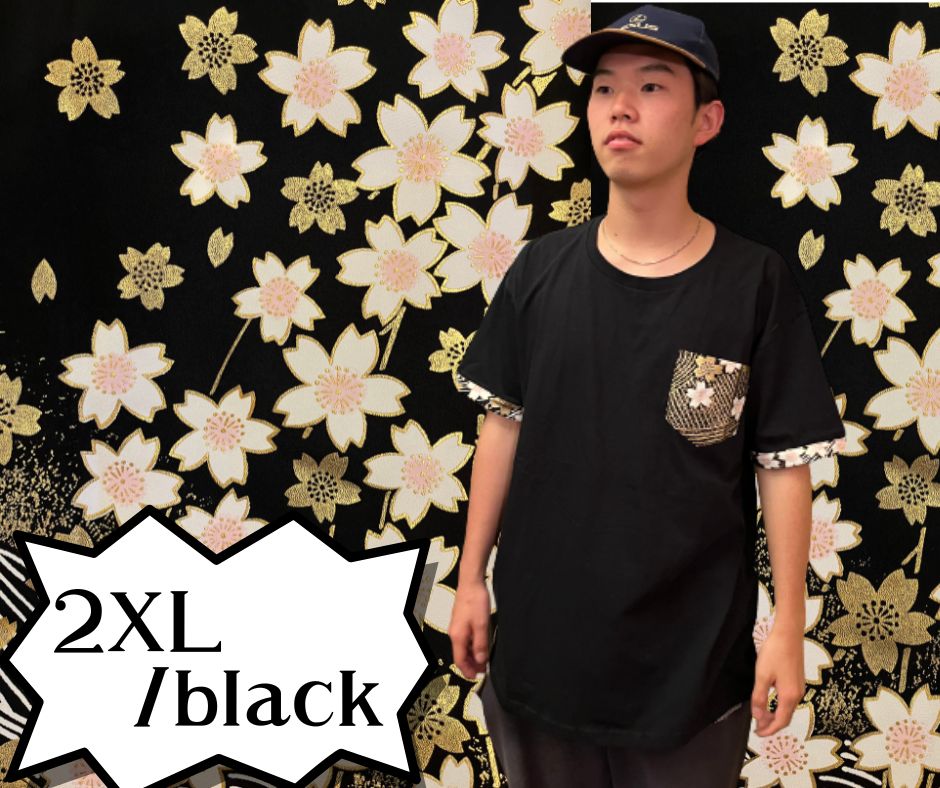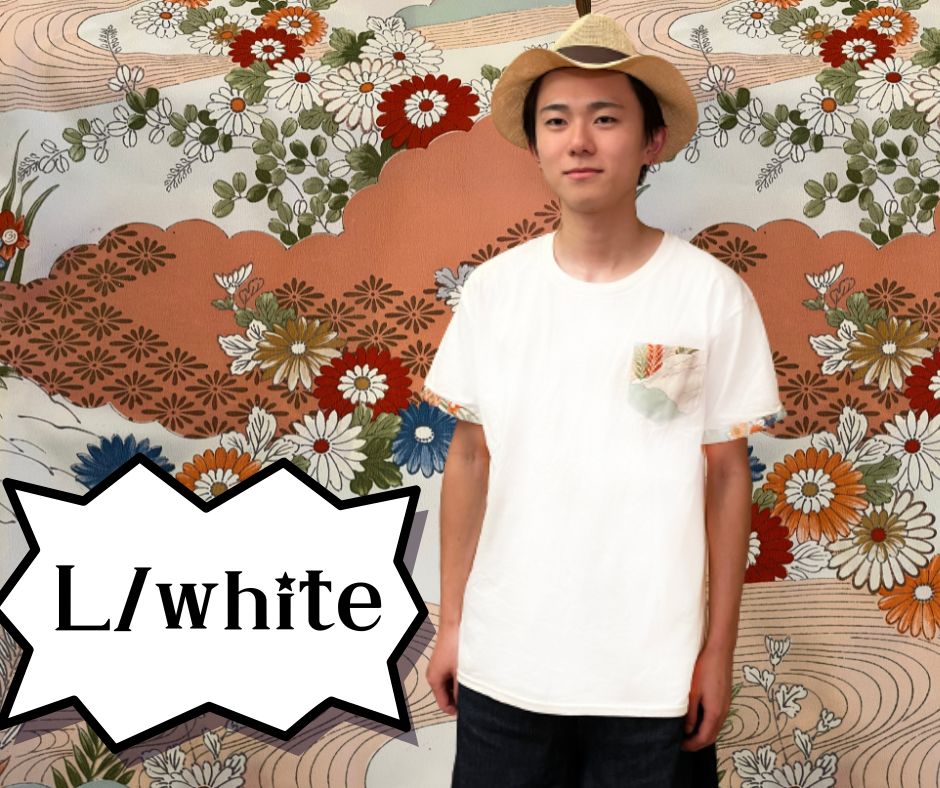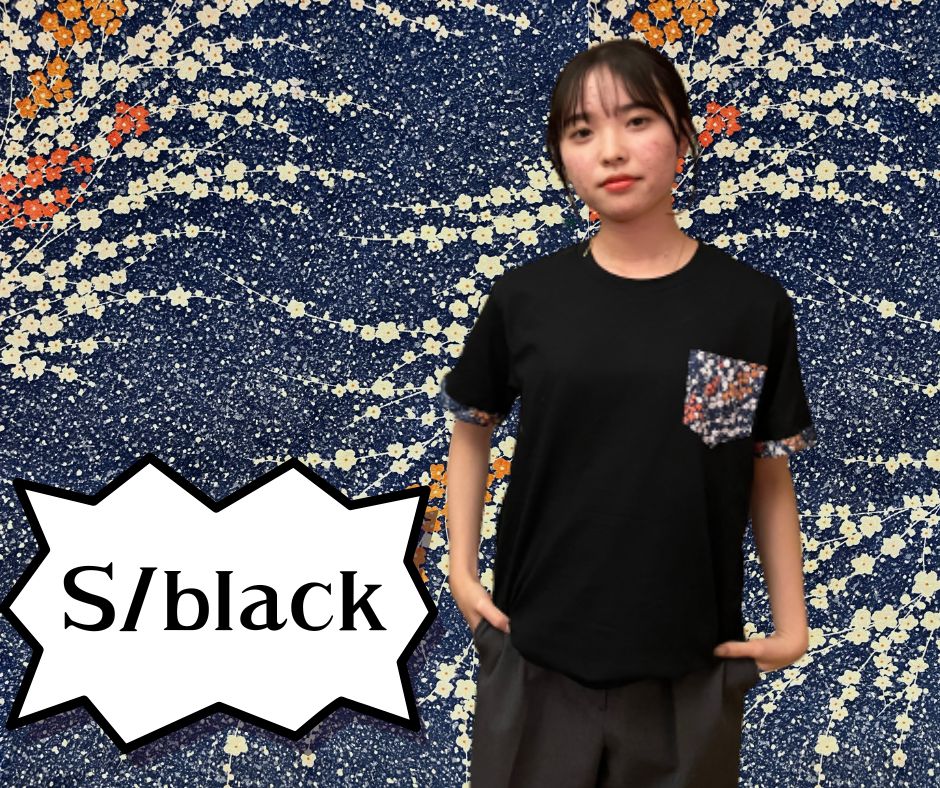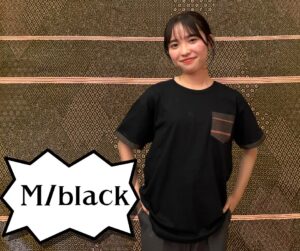Creative and Fun Atelier
〜楽しい創造のアトリエ〜

In Japan today, because opportunities to wear kimono in daily life have decreased, disposing of old kimono hanging in the closet at home is a real problem for many people.
The kimono used for these “Kimono T-shirts” are, with old kimono that are no longer worn, evoke Japanese culture of a bygone era but imbued with a modern sense of style.
現在の日本では、
着物を日常的に着る機会が減ってきたため、
家のタンスに眠っている着物の処分に
困っている人が多いのが現状です。
今回の「着物Tシャツ」の着物は、
着なくなった着物を回収したものを使用して
古き良き時代の「着物」を
新しい感覚でクリエイトしてみました。
【T-SHIRTS × KIMONO】
Casual × Japanese costume
|
LINE UP |
Sakuragawa
桜川(さくらがわ)
Cherry blossoms, a popular symbol of Japan since ancient times. Their splendid blooms signal that winter is over and that spring is here. The cherry blossom pattern is an auspicious one, showing the hope of a bountiful harvest. Cherry blossoms floating in running water mean “the beginning of things never ends or auspicious things will continue.”
古くから愛されてきた日本の象徴、桜。寒い冬を越え咲き誇る圧巻の佇まいは、春の歓びをもたらします。そんな桜の文様は幸先の良い「物事のはじまり」を意味します。
桜の名前は、稲の神様「さ」が宿る「くら(蔵)」に由来する説があり、桜柄は五穀豊穣を願い、新しい門出を祝う縁起の良い文様。
さらに、流水に桜が浮かぶ文様は「桜川」とも呼ばれ、「物事のはじまりが絶えない=おめでたいことが続く」ことを表します。
SIZE:2 XL COLOR:BLACK

![]()
Chrysanthemum
菊(きく)
The chrysanthemum is one of the most popular patterns in Japan. Because it is arranged in a radial pattern,like the sun the chrysanthemum is ranked at the top of all 100 flowers. The chrysanthemum is an auspicious pattern meaning immortality, longevity, good health, that casts out bad luck.
菊は日本人にもっとも親しまれている文様の一つです。 菊は放射線状に整っているため太陽になぞられ 百花中、最上位にランクされています。 中国においても漢代より大変好まれた花の一つです。 当時の神仙思想との繋がりから、不老不死、延命長寿の漢方薬としても利用されてきました。 その名残として重陽の節句に菊を眺め、菊酒を飲む習慣が現代でも残っております。 菊は、不老不死、延命長寿、無病息災、邪気払いの基本的意味がある吉祥文様です。
SIZE:2XL COLOR : WHITE

![]()
Wisteria with Flowing Water
藤(ふじ)× 流水文様(りゅうすいもんよう)
This splendid, tufted flower resembles an ear of rice, so it is a flower showing the wish for a bountiful harvest. The weeping flower buds that bloom downward are revered as connecting heaven and earth, as well as ensuring the prosperity of descendants. The flowing water pattern is believed to wash away hardships and misfortunes, as well as to protect the wearer from fire.
平安時代に活躍した藤原氏の繁栄とともに高貴な花とされ、「不死」と同じ響きから長寿や子孫繁栄を表します。華麗な房状の花が稲穂に似ていることから、豊作を願う花として描かれてきました。下向きにしだれるように咲く花穂が、天と地をつなぐものとして敬われ子孫繁栄の意味もあります。 流水文様は、絵画のようにも幾何学のようにも見える文様。 絶えず止まることなく流れる水は清らかで美しく、苦難や厄災を流し去ってくれるうえ、火から身を守るという願いも込められています。
SIZE:XL COLOR : BLACK

![]()
Dogwood
花水木(はなみずき)
In 1912, the mayor of Tokyo donated cherry blossoms to the city of Washington in hopes of promoting friendship between Japan and the United States. In return, dogwoods, a flower loved by Americans, were sent to Japan. And so the flower language for “mutual understanding” was exchanged. The flower language “permanence” comes from the image of this flower growing slowly and surely, enduring adversity.
1912年、当時の東京市長が、日米友好を願ってソメイヨシノををワシントン市に寄贈した返礼として、アメリカの人々が心から愛する花であるハナミズキが日本に贈られました。
このエピソードが、ハナミズキの花言葉「私の想いを受けとめてください」の由来となりました。ハナミズキの花言葉には、日本語でも英語でも「永続性」という言葉があります。これは、ハナミズキがゆっくりと生長することからつけられた花言葉です。
SIZE:XL COLOR:WHITE

![]()
Butterfly
蝶(ちょう)
The butterfly transforming from an egg into a larva, then a pupa, and finally soaring as a beautiful butterfly is a symbol of longevity, immortality, and success in life. The butterfly pattern is an auspicious pattern believed to bring good luck.
蝶文様は、平安中期にはすでに文様として採用されていたようです。 蝶が卵から幼虫、さなぎを経て美しい蝶となって舞い上がる様が長寿・不死・立身出世の象徴とされてきました。 蝶柄は縁起が良いという意味。
SIZE:L COLOR:BLACK

![]()
Floating Chrysanthemum
菊水(きくすい)
The chrysanthemum is one of the Japanese people’s most cherished designs, meaning immortality, long life, longevity, good health and casting out bad luck. In addition, the pattern of winding and flowing water is a celebratory pattern representing “eternity”.
菊は日本人にもっとも親しまれている文様の一つです。
重陽の節句に菊を眺め、菊酒を飲む習慣が現代でも残っております。
菊は、不老不死、延命長寿、無病息災、邪気払いの基本的意味がある吉祥文様です。
流水の多くは小川の様子を描いています。
曲がりくねって流れる水の様子を文様化したもので、「永遠」を表すおめでたい柄でもあります。
SIZE:L COLOR:WHITE

![]()
Edo Komon
江戸小紋
Edo komon feature small patterns that look plain from a distance that are stencil dyed using only one color. These Edo komon feature patterns such as sayagata, ume, diamonds, and waves. Sayagata is a distinguished crest representing “uninterrupted longevity”. Ume (Japanese apricot) means “patience”. The auspicious wave pattern of calm waves continuing endlessly means “for eternity in peace”.
江戸小紋は、遠目には無地に見えるほどのごく小さな柄を、一色のみの型染めで染め上げた小紋。
紗綾型、梅、菱、青海波などの文様があつまった江戸小紋。紗綾型は、卍を斜めに連続させた文様で、「不断長久」の吉祥紋とされています。
梅は、厳しい冬を耐え、花を咲かせる梅には忍耐という意味があります。
青海波は、穏やかな波がどこまでも続いている様子を模様にした青海波(せいがいは)は、「未来永劫平穏に」という意味が込められた吉祥文様です。
SIZE:M COLOR:BLACK

![]()
Open Fan with Peacock
扇面(せんめん)× 孔雀(くじゃく)
The fan, also called suehiro when opened out, is a symbol of prosperity and good luck. In addition, the peacock with beautiful feathers inside the fan symbolizes disaster and the prosperity of descendants. Peacocks are so full of vitality that they eat poisonous snakes and pests, so they are believed to ward off evil spirits.
扇は末広がりの形から「末広(すえひろ)」とも呼ばれ、繁盛・開運の吉祥文様です。
扇で「あおぐ(仰ぐ)」ことは、あおり立ててさとすことを意味し、神霊を呼び起こして、物の霊を揺り動かす力を備えた道具ともされました。
また、美しい羽をもつ孔雀は、災厄や子孫繁栄を象徴する柄とされています。
孔雀は毒蛇や害虫を食べるほど生命力が高いので、邪気を払うと信仰されてきた鳥です。
SIZE:M COLOR:WHITE

![]()
Ume
梅(うめ)
Since ancient times, the Japanese people have prized the ume (Japanese apricot) blossom for its lovely shape, branches, and fragrant scent. It represents “patience” and “integrity”, because it blooms in the cold winter season.
梅は、厳寒の中でどの花よりも先駆けて咲くさまから、逆境に耐える力を与えるとされる文様です。
梅の毎の文字は母親を表しますが、厳寒の最中、香り高き花を咲かせる梅の姿は、まさに子を産み育てる母親の強さ、尊さに重なります。梅=「産め」という掛詞から、伴侶を迎え、子孫繁栄を願う結婚の儀式で花嫁が着る打掛にも描かれています。
SIZE:S COLOR:BLACK

SIZE:S color:WHITE











